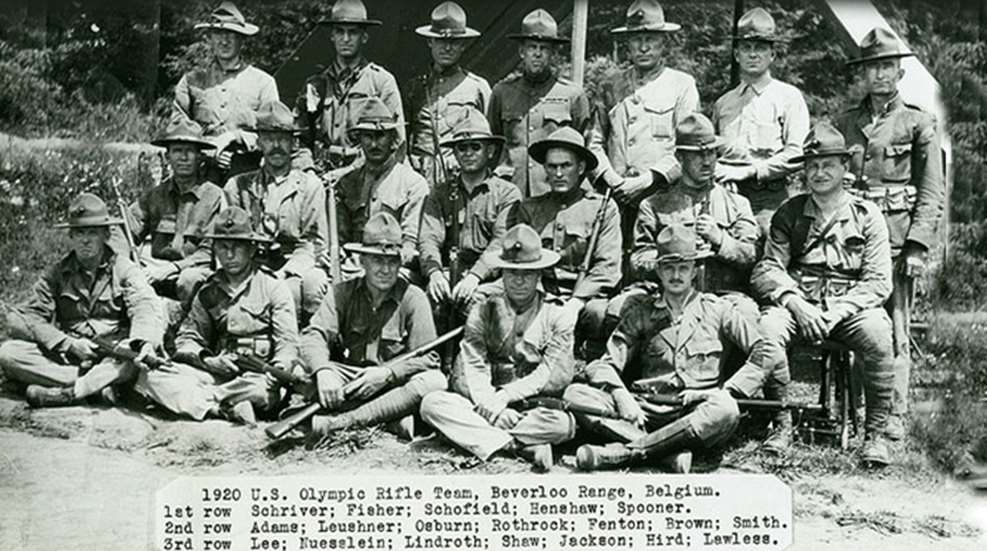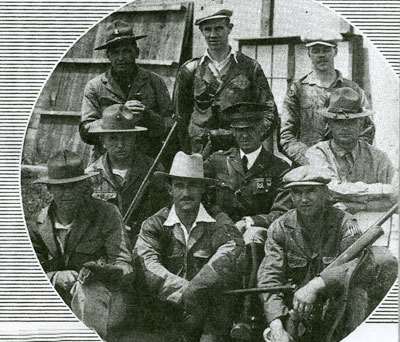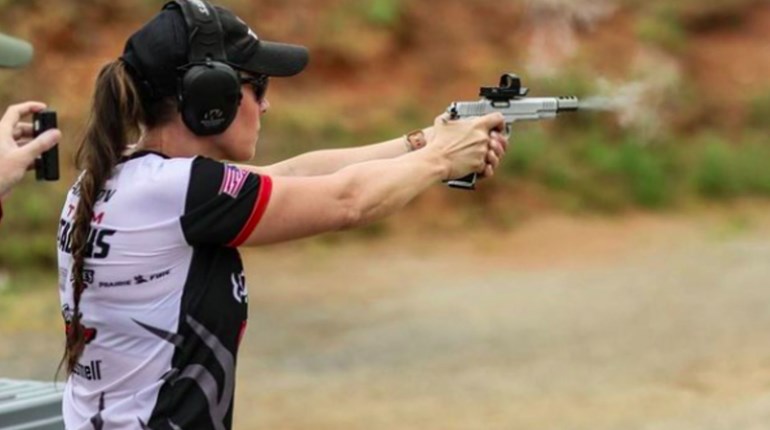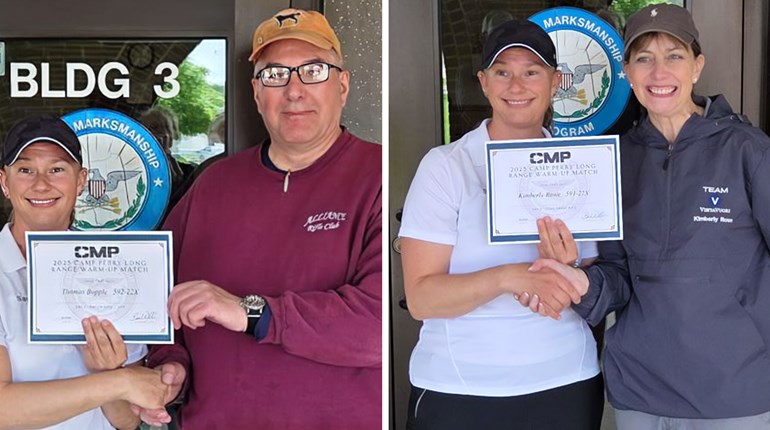
For most of those years we managed to dominate 300 meter competition using rifles based on the Model 1903 Springfield chambered for the .30-’06. We had two decades of experience with the Springfield in domestic across-the-course and long range high power competition. We knew it well. The great American marksman, Morris Fisher, had used an unmodified (though selected) Springfield to win the 3 x 40 match in the 1920 Olympic Games, although the European shooters favored rifles based on the Martini single shot action (for its fast lock time) stocked in a manner reminiscent of the American Schüetzen rifle. There were a few Martinis in the USA but they were uncommon.
The Springfield had some shortcomings: The trigger did not permit pull weights in the desired ounce range and it had a lengthy lock time. Team members and officials worked on these two problems throughout the 1920s. The trigger problem was addressed by a succession of replacement set triggers: Initially a German model and later by American units made by Frank Rimkunas and G. A. Woody.
The lock time is the time interval between trigger actuation and striker impact on the primer. Stuart Otteson, in The Bolt Action, notes that “It is primarily a function of the length of firing pin travel, the power of the mainspring and the weight the mainspring must accelerate.” In the time it takes the firing pin of the long lock time rifle to reach the primer, the bullet fired with the short lock time will be out of the barrel and on its way to the target. Otteson reports that the Springfield of the 1920s had a lock time of 6.5 milliseconds (ms). Most modern bolt action rifles have lock times in the 2-4 ms range.
An earlier article told how our 1921 300 meter team not only won the world team championship but, by introducing aperture sights and the rifle sling (in prone and kneeling ) changed international rifle shooting forever. The team’s rifles were heavy-barreled Springfields with the heads of the cocking pieces ground off and bolts with “a selected firing pin and spring.” No lock time figures are cited in the article but the improvement, if not dramatic, was probably helpful.
The U.S. team did not rest on its 1921 laurels for the 1922 World Championship. Springfield Armory and the Marine Corps Depot in Philadelphia developed the rifles for the 1922 team. Quality barrels were carefully bedded in stocks having extra wood for individual fitting. An adjustable, removable hook butt plate and an adjustable cork ball palm rest completed the package. And, “An American refinement never before placed on a match rifle” was added: a fore end sling swivel adjustable over three inches in quarter inch increments. Lyman 48 rear sights were combined with aperture front sights with a selection of inserts.

The 1923 world championship was scheduled for Camp Perry but only the U.S. team showed up. The official excuse was that the currency exchange rate was so unfavorable that the Europeans couldn’t afford the trip. Prohibition was also a problem: The American Rifleman (10/1/1923) announced “When Continental Europe, on the plea that the dollar was too big and the country too dry, refused to send teams to participate in the International Matches of 1923, the United States determined to defend its claims to the Individual and Team Championships of the world, won at Lyon and Milan, whether or not any other contenders appeared.” Morris Fisher trained hard and raised the 3 x 40 record twelve points to 1090 and our five shooters raised the team record a whopping 129 points to 5301. Our team, in addition to Fisher, included Walter Stokes, Lawrence Nusslein, J. K. Boles and Carl Osburn, all international veterans.
Most of the 1923 team used Springfields as they had earlier but Carl Osburn used two rifles: for prone, a Springfield stocked by Marine E. J. Blade (who won that year’s Wimbledon Cup) and a Martini for kneeling and standing.
The 1924 U.S. team was determined to show the world that our “win” in 1923 reflected our true shooting ability. After try-outs at the Quantico, VA, Marine Corps Base, the team arrived in Rheims, France in early June. There were 12 other nations competing with a full day devoted to each position. After the standing day, the U.S. led the Swiss by five points and in kneeling we picked up two more. Prone made the big difference: We defeated the Swiss by 93 points, giving us a team total of 5284 (x 6000)—a full 100 points ahead of our Swiss rivals. No doubt about it; our performance the year before was no fluke. Morris Fisher won the 3 x 40 individual championship (with a 1075) and Walter Stokes shot 383 for the prone championship. We used Springfield rifles with Pope barrels, though Stokes used a Remington barrel.
The Swiss, needless to say, were not amused, and resolved to do better in 1925 when the World Championship matches would be held on their home turf, in St. Gallen Switzerland.
The USA went into the 1925 matches “one down.” Several of our most experienced shooters were unable to make the trip and, because of the late decision to send a team, open try-outs were not used for team selection. Instead, those judged to be of “team timber” were invited to Quantico where final team selection occurred.
The Swiss had problems, too. They had reportedly obtained a Springfield match rifle and a quantity of our ammunition. Testing revealed that their equipment was less accurate than ours. The fast lock time of the Martini was not a cure-all. Swiss precision was called upon and soon their team’s rifles were equipped with improved barrels and ammunition. The new combinations were found to be as accurate as ours, and it worked. The Swiss won the 3 x 40 team championship by 131 points, posting a new record score of 5386. The Swiss won all four individual championships three with new record scores. The low man on the Swiss team equaled the score of our second highest shooter.

Julian Hatcher waxed rhapsodic in the June, 1928, Rifleman: “These [Martini] rifles seem to just naturally fall into place in the standing position . . . In fact, the gun seems to point and hold itself.” We installed our own .30-’06 barrels on otherwise complete Martini platforms. Each rifle came with two butt plates; one for prone and one for kneeling and standing.
For all that, in the 1928 World Championships in Loosduinen, The Netherlands, we again finished third behind the same two as the year before: Switzerland (with a new record score) and Sweden. We beat the Swiss prone but trailed them by 59 points standing. In 1929, we improved our placement to a more respectable second place, but found ourselves outgunned by two Swiss: Hartmann and Zimmermann, who both shot record scores of 1114. American Harry Renshaw was third with a 1091. The Swiss pair out shot our top two (Renshaw and Russell Seitzinger) by 47 points and the Swiss beat us by 45. The Swedes, on their home range in Stockholm, could do no better than third.

We celebrated our World Championship win that year by withdrawing from international free rifle competition. The NRA had been considering the move for years but had not wanted to leave the field as long as we were losing. Now, though, we were on top again and could retire without looking like losers running from a fight.
The scant popularity of the free rifle game in the U.S. was cited as a reason for dropping out, along with the difficulty of getting adequate equipment and the rising popularity of the smallbore game. We would concentrate on the latter, thus starting the cycle of Pershing/Roberts international teams that lasts to this day.
So ended the first American decade in international shooting. There would be more and greater to come, but over two decades would pass before it happened.


































